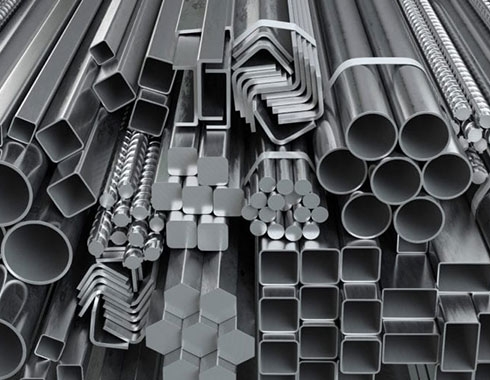The Rise of Aluminium Price per kg: Key Factors and Predictions

Aluminum is becoming more and more a vital material across many industries, including construction, automobile, aerospace, renewables, etc. It is very crucial for manufacturers, buyers, and sellers to understand what drives the price changes in aluminum. In this article, we look at some of the factors that increased the prices of aluminum in a nutshell and provide some predictions for the future as well.
1. Current Trends in Aluminium Prices Per Kg
In the last year, the prices of aluminium have been subjected to some serious fluctuations, and most often, they are influenced by the dynamics of imbalance in supply and demand. Recent increases were generally global problems, caused by production delays and geopolitics. Most importantly, such fluctuations necessitate monitoring trends in prices before taking a buying or selling decision.
2. Leading Causes of Surge in Aluminium Prices
Here we mention some of the reasons which resulted in the increased cost of aluminum:-
Aluminium Demand Globally
• More Industrial Usage: Aluminium is the most vital metal for several industries, particularly automotive and construction, where increased demand asks for lightweight vehicles and energy-efficient buildings.
• Electric Vehicles (EVs): Apparently, the increased demand from the electric vehicle sector has greatly enhanced the uptake of aluminum. EV manufacturers have increasingly resorted to lighter aluminum construction to build energy-efficient cars. This trend is most likely to continue, which will also scale up demand.
Supply Chain Disruption
• Shipping Delay: The supply chain problems of shipping delays and bottlenecks have delayed the delivery of raw aluminium and finished products. All this added to the shortage and drove prices even higher.
• Mine Reductions: Many principal aluminium-producing regions are reducing their mining operations due to environmental concerns and stricter regulations, which keep the raw materials from getting in the supply chain.
Energy Costs and Production Restrictions
• Energy-Intensive Manufacturing: Aluminium production is energy-intensive. Its processes of production specifically relate to the smelting and have tied up such energy costs to their operations. Nowadays, increased energy prices, particularly in some major regions with aluminium production within them, have been equal to elevated production costs, affecting the consumers at last.
• Smelting Problems: Currently, many plants are being affected by reduced production due to the constraints of either energy shortages or environmental policies, causing slower output rates and supply-demand imbalances.
Geopolitical Considerations
• Barriers to Trade: Barriers put up by countries, regressive tariffs, and sanctions have been tools through which international trading on aluminium was affected.
• Acts of Nature and Political Upheaval: Disasters in nature and political tumult, such as hurricanes and flooding, have also had an impact on production in some regions with a great amount of aluminium, and their commerce is inhibited by political tensions in these countries.
3. Recycling of Aluminium and Prices
Recycling significantly affects stabilizing the prices of aluminum. When recycled, aluminum definitely curtails the demand for mining it directly from the source. This condition applies to scrap aluminum when the collection rates and processing capacities are limited.
• Recycling Challenges: Perhaps, just like other times, aluminum has improved recycling rates. However, challenges have existed between collecting and sorting efforts. In the long run, an increase in recycling rates in that sense may help stabilize prices.
• Recycled Aluminium Price Effect: Recycled aluminium is much cheaper to manufacture than primary aluminum, and this offset can help cushion against rising raw material prices. Still, demand for high-quality scrap would add a twist to price predictions, as it is likely to raise the price.
4. Projections of Aluminium Price Trends Over the Coming Years
According to experts, aluminum prices will keep shooting up in the immediate future on the following grounds:
• Sustainability Trends: The industrial sectors moving towards sustainability will increase demand for aluminum, especially in clean energy technologies such as solar panels and electric vehicles.
• Low Emerging Markets: Demand for aluminium is much increasing as developing countries are transforming into industrial societies; hence the additional pressure to global supply chains.
5. How to Deal with Aluminium Price Variations
It is necessary for companies and individuals depending on aluminium to manage the volatility of prices so that they can be competitive. Below are some considerations:
• Long-term Contracts: Businesses can hedge price shocks by locking in price through long-term contracts.
• Buy in Bulk: Buying in bulk at favourable prices can help offset high future price hikes for manufacturers.
• Track Trends: Knowledge of the primary driving forces impacting aluminium prices-latest being geopolitical issues and energy-bids will enable businesses to make more tactical buying decisions.
Conclusion
Aluminium prices are rising due to a combination of global demand, supply chain disruptions, and energy constraints. With these continuing issues, prices are likely to remain volatile for the foreseeable future. Understanding these drivers and the best ways to mitigate risk will go far in helping businesses and individuals through these dramatic swings in market conditions. Awareness of the market and projections for changes will be most beneficial for wise buying and selling decisions in the aluminium market.
- Industry
- Art
- Causes
- Crafts
- Dance
- Drinks
- Film
- Fitness
- Food
- Giochi
- Gardening
- Health
- Home
- Literature
- Music
- Networking
- Altre informazioni
- Party
- Religion
- Shopping
- Sports
- Theater
- Wellness
- News


